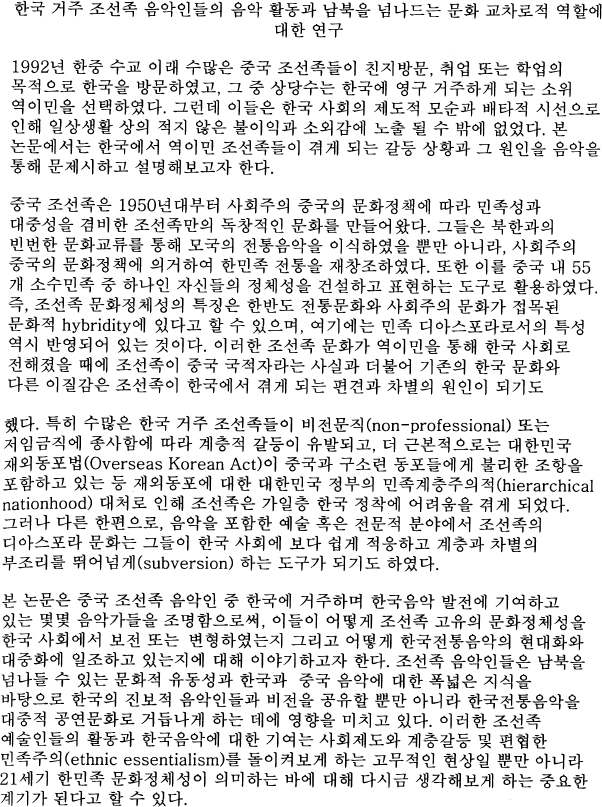Article contents
More Than Two Koreas: Cultural Intersection and Chinese Korean Musicians in Contemporary South Korean Music Scenes
Published online by Cambridge University Press: 06 December 2018
Extract
On 23 June 2011, the Seongnam Municipal Troupe of Korean Traditional Performing Arts (hereafter, Seongnam Municipal Troupe) presented its twenty-eighth concert, entitled Hana toenŭn kyŭre ŭi ŭmak (Unifying Korean national music). The South Korean government has designated June as a month of commemoration for the nation's patriots and veterans. As many government troupes in South Korea would do in June, the Seongnam Municipal Troupe dedicated its regular concert series to the remembrance of national heroes, cherishing their patriotism and sacrifice. As stated in the concert programme, “this performance is put together to bless the people who died protecting their nation and to express compassion for the 10 million families separated between the two Koreas … wishing for the nation's reunion and unification in the near future” (Han 2011:2). In order to memorialize war victims and the tragedy of partition, the Seongnam Municipal Troupe was to showcase musical works selected from both North and South Korea. In the programme, Ch'oe Sang-hwa, guest director of the Troupe, remarked:
Today's concert intends to draw a comparison between different musical constructions of North and South Korea … For the last sixty years, each Korea has developed its own version of chont'ong iimak [traditional or national music]. While South Korea has endeavoured to preserve the performance practices of traditional Korea under the growing influx of western music … instead of transmitting the old tradition as is, North Korea has newly created its own national music by inventing new instruments and developing a new vocal style with bright and clear sound colour … (Ch'oe 2011:3)
Abstract in korean

- Type
- Articles
- Information
- Copyright
- Copyright © 2014 by the International Council for Traditional Music
References
References Cited
- 2
- Cited by




